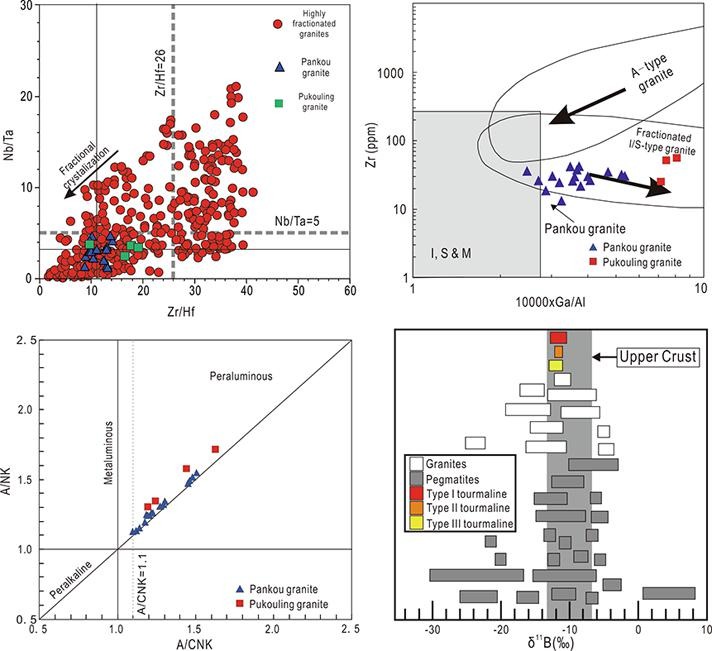Genesis of highly fractionated granite and associated W-Sn-Be mineralization in the Xuebaoding area, Sichuan Province, China
| Reviews and Highlights | Quantum Science | Molecular and Soft-matter | Ultrafast Nano-optics and Nanophotonics | Mineralogy and Geochemistry |
|---|
Yongwang Zhang, Yan Liu, Xinxiang Zhu, Markus B. Raschke, Nengping Shen
Ore Geology Reviews 135, 104197 (2021).
DOI PDF SI

The Xuebaoding W–Sn–Be deposit in the Songpan–Garzê Orogenic Belt of western China contains coarse-grained W–Sn–Be–F–P-bearing minerals, and has been the subject of several previous geochronological, petrographic, and ore-forming fluid studies. However, the genesis of the deposit, including the Pankou and Pukouling granites and associated W–Sn–Be mineralization has remained unclear. In this study, geochemical and Sr–Nd–Pb isotope analyses of both Pankou and Pukouling granites were performed revealing high A/CNK values (>1.09) and alkali contents (8.16–13.01 wt%), and are enriched in W, Sn, Be, B, F and volatiles. Sr–Nd–Pb isotope values of 87 Sr/87Sr(i) = 0.67–0.73, εNd(t) = − 11.49 to − 23.19, 206Pb/204Pb = 18.710–19.908, 207Pb/204Pb = 15.647–15.708, and 208Pb/204Pb = 38.434–38.929 were determined. The samples contain 30–35 vol% muscovite and no hornblende. In addition, the granites have high Be (6.73–1681 ppm), Sn (28.9–200 ppm), and W (2.07–54.1 ppm) contents, and the host marble has low and variable Be (0.05–0.21 ppm), Sn (0.23–0.82 ppm), and W (0.20–2.37 ppm) contents. Further, three types of tourmaline were identified as associated with the magmatic–hydrothermal stage of the granites, with B isotope values of − 11.21‰ to − 13.65‰, also indicating a metasedimentary origin for the granites. All these results indicate that the Pankou and Pukouling granites show highly fractionated S-type characters, derived by partial melting of metasedimentary rocks. Thus, the W–Sn–Be mineralization was closely related to the evolution of such highly fractionated granites in Xuebaoding.
